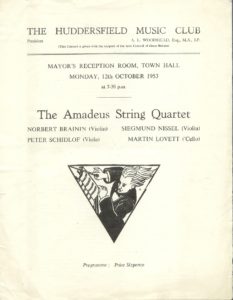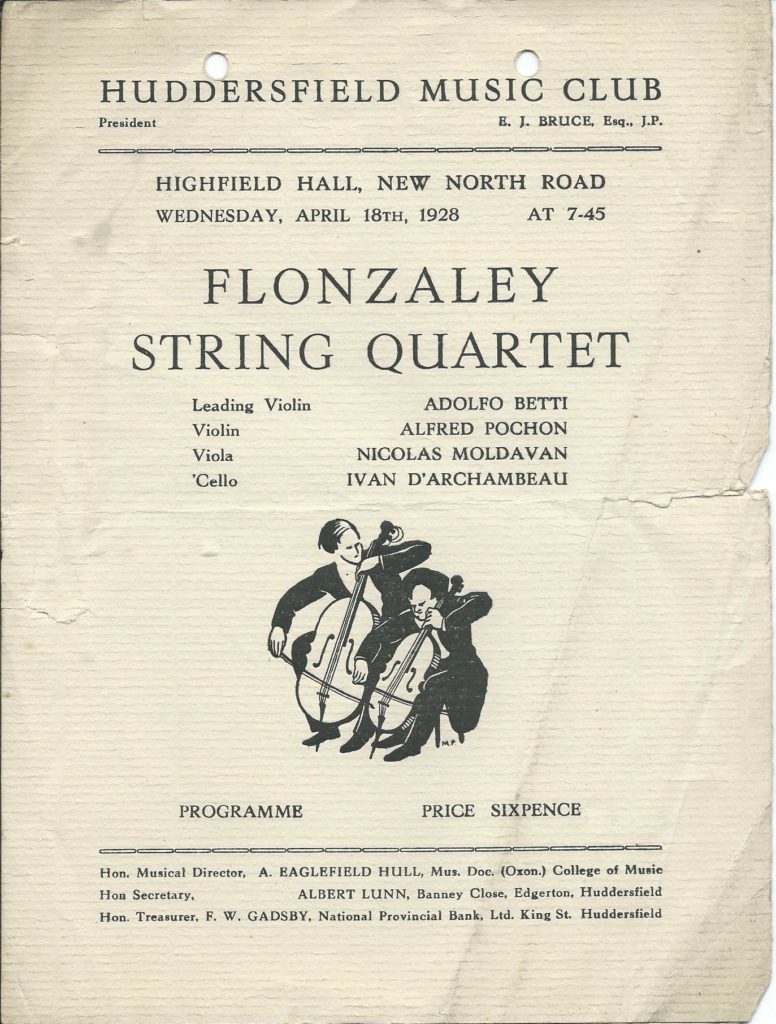Live musical events play a vital role in community life across the globe, yet their very ‘liveness’ means they often leave only faint traces on the historical record, even in modern times. While musicologists have used some types of concert ephemera to capture the nature and identity of musical events, sources are regarded as ephemeral and can be tantalisingly incomplete, confusingly inconsistent, and often scattered between different archives and collections. Funded from the AHRC’s UK-US New Directions for Digital Scholarship in Cultural Institutions programme, InterMusE is a two-year project that will enable new ways of capturing and, crucially, linking different forms of data around musical events to form a dynamic, open-access digital archive. Focussing on often under-resourced regional and local cultural institutions, we are working with audiences, venues, and communities in understanding their own histories and reflecting on their identities. By adopting a deeply collaborative and democratic approach based on the principles of digitally enabled collaboration and co-design, we are developing transformative tools and techniques for community digitisation projects. The richness of the resulting data will offer unprecedented opportunities to collect, analyse, and visualise information about musical events and how they have shaped and been shaped by community life over the past century.

The InterMusE team will work with materials held at the University of York’s Borthwick Institute for Archives, the Krannert Center for the Performing Arts (University of Illinois at Urbana-Champaign), Linen Hall Library (Belfast), Royal College of Music, and three former chapters of the British Music Society (est. 1918): Huddersfield Music Society, British Music Society of York, and Belfast Music Society. Each of the selected institutions have their origins in progressive and socially inclusive visions: the BMS was established by Arthur Eaglefield Hull in 1918 across the UK to restore musical-cultural exchange between British and overseas musicians after the First World War, while both The Krannert Centre and the Borthwick are housed within universities that share a deep commitment to social inclusion (from University of Illinois’ land-grant status and the University of York’s roots in Quaker philanthropy). The performance-histories held in these institutions thus present an opportunity for an international comparison of concert centres founded on the basis of the ‘public good’ while encompassing varying communities, histories, and urban contexts.
Using machine learning, natural-language processing, optical character recognition (OCR), and other forms of artificial intelligence, we will harvest data from a range of sources including concert programmes, memoirs and correspondence, posters, tickets, brochures and other ephemera. To enable broad community participation, these computational techniques will be integrated with existing crowdsourcing techniques and less technology-heavy approaches including oral-history interviews, audience reminiscences, and citizen research to create a series of open-access digital archives that can be linked with existing digital portals via the International Image Interoperability Framework (IIIF).
Research Questions and Objectives
InterMusE addresses research questions in three areas:

- In what ways have the progressive and inclusive visions of the selected cultural institutions been reflected in trends in their concert programming, design of marketing and ephemera, and programmes of engagement since their founding? At each point, who is being included, who excluded, and what is happening structurally to produce these outcomes? How does this differ among the three organisations – how, when, and why does change happen?
- What can historical data tell us about the role of community politics (including intergenerational politics), patterns of migration, and geopolitics in maintaining and building audience engagement with cultural institutions?
- What constitutes best practice for facilitating digitally enhanced collaboration among academic and cultural institutions, and between cultural institutions and their audiences/patrons?
The project comprises interlinked streams that will:
- Apply aspects of machine learning and artificial intelligence to the capture and analysis of local performance data from inter-related archival materials through time.
- Invite and accumulate layers of crowdsourced memories from audiences in response to selected artefacts.
- Expose hidden patterns and trajectories in musical data spanning a century of social and political change.
- Apply the insights gained to enrich the experience of live musical performances mediated by digital technologies.
Outcomes
Research outputs including publications, presentations, and teaching materials will be produced over the course of the project. The data gathered via the project will be brought together in the creation of a richly textured ecology of open-access digital archives for participating organisations. These digital portals will be brought together, shared with, and linked to similar resources via IIIF. We will generate new digital tools and standards for using databases and digitisation to compile and present performance-history data, as well as enhanced policy, practice, and guidance on creating and accessing dynamic digital archives and on engaging communities in the archiving of performance-history data. The project will also have a significant cultural impact. Non-scholar participants in concert life will gain strengthened voice, increased access, and deepened investment and sense of equality. Concerts regardless of location will more robustly become part of the network of historical and musicological investigation. Performing-arts organisations and their stakeholders will gain tools and methods to better understand their own musical histories and traditions and will see possible developmental models as they plan for the future.
